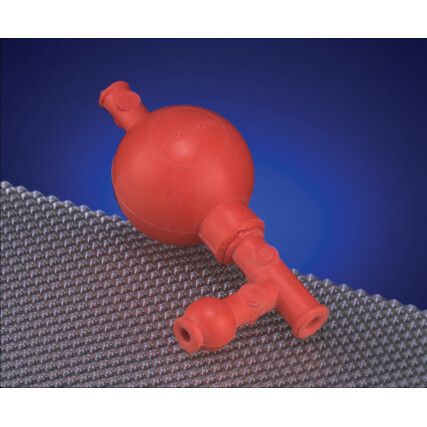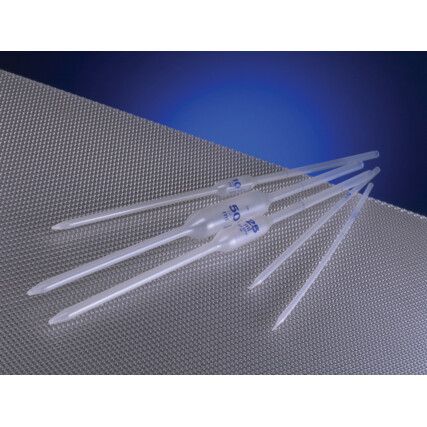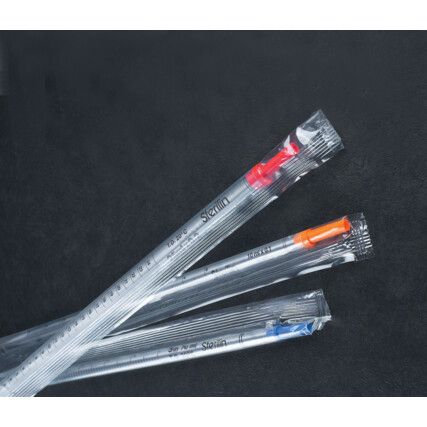Pipettes
Browse our range of pipettes online at Cromwell. Choose from a range of sizes and materials, with both sterile and non-sterile options. We only stock products from high-quality brands, like Sterilin® and Azlon® to give our customers a reliable service.
What are pipettes?
Typically made from plastic or clear glass, a pipette is a tool used to transfer small precise amounts of liquid from one container to another.
Why buy pipettes?
Pipettes reduce the risk of chemical spillage when transferring from one container to another and allows for the precise extraction of liquid samples.
When are pipettes used?
They're mainly used in laboratory settings, but pipettes are also used in dentistry, healthcare settings, and sometimes for art projects and in restaurants.
Pipette types
Used in multiple industries, the pipette design has evolved over the years and now ranges from basic to calibrated variations...
• Disposable pipette - Used for the transfer of liquid, these plastic pipettes can be disposed of after use to prevent accidental contamination.
• Graduated pipette - This type is usually made of glass and features a rubber bulb at the end to draw up the liquid. Unit of measurements are printed up the side of the tube and allow for a precise measure of fluid to be taken.
• Multichannel pipette - This type of pipette technology allows for the most accurate measurements. It uses disposable tips and can attach multiple tips at one time to take up and dispense multiple samples of liquid at once.
• Single-channel pipette - This pipette uses similar technology to the multichannel type, but only uses a single tip.
Considerations when choosing pipettes
• Precision - for simple transfer tasks, the basic pipette will do, however, for more advanced tasks that require precise measurements; its best to consider the other variants.
Pipette jargon buster
We want to help you to better understand our product range so you can make the best purchasing decision for your requirements. Therefore, we've outlined an applicable standard to keep you up to date with quality testing.
What does BS EN ISO 7712:1983 mean?
This standard stipulates the requirements for transfer pipettes intended for the transfer and depositing of liquids (including biological materials) and chemicals in a laboratory setting. Two sizes of pipette are described in this document, with both sizes required to resist sterilisation if exposed to saturated steam or dry heat.
Let's break it down...
• BS - This abbreviation is for the British Standards Institute, which highlights that this standard is part of British law.
• EN - This abbreviation comes from the translation of the German for European Norm, which shows its adoption into European legislation.
• ISO - This stands for the International Organization for Standardization, the independent body who prepares and publishes safety and quality standards.
• 7712 - This is the standard's legislation number.
• 1983 - This standard was published in December 1983 and was last confirmed in 2021, making this first edition current and accurate.
FAQs
How does a pipette work?
All types of pipettes pretty much work using the same method of air displacement. This is either through a plunging or bulb method where the depressed air creates suction to draw in the liquid to be held. Once dispensed, the pipette fills with air again.
What's the difference between a dropper and a pipette?
These names can be used interchangeably as a dropper is also a pipette. Both work using the same method and can hold and dispense liquids as required.


